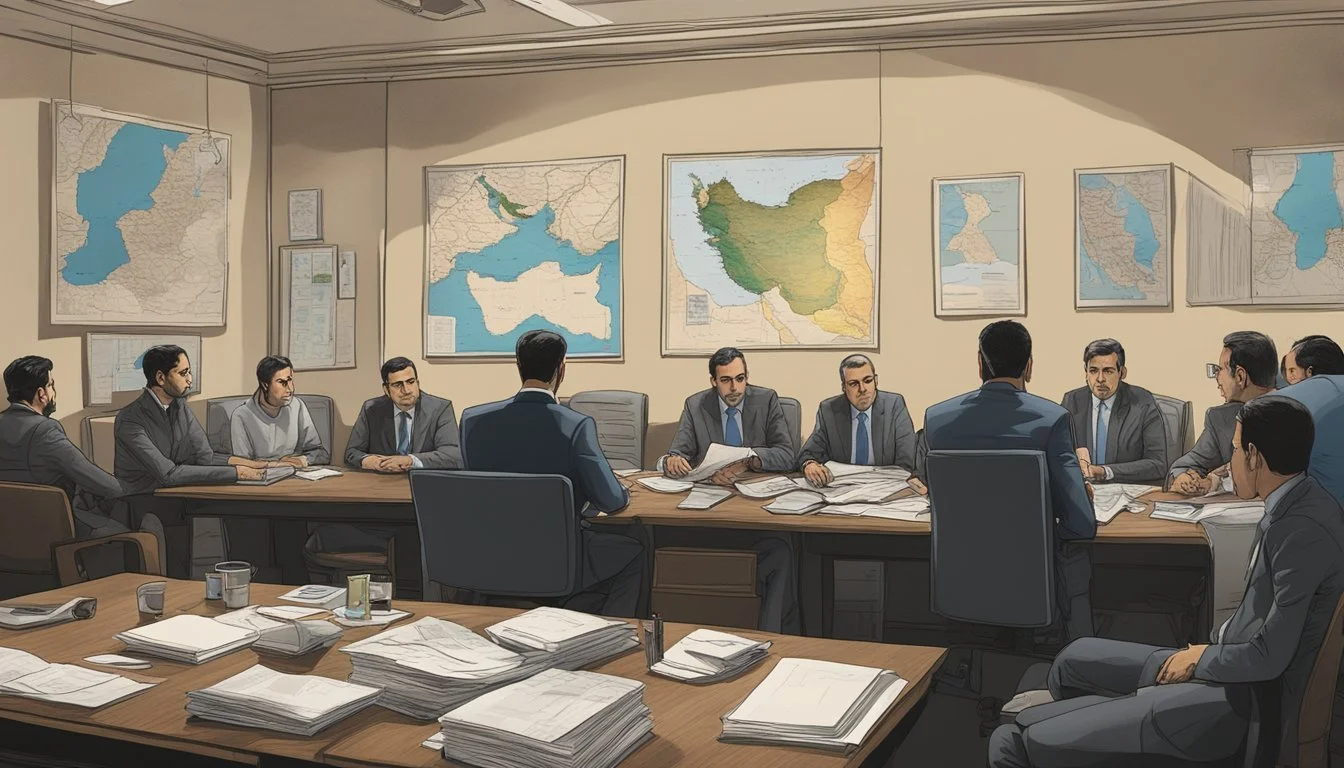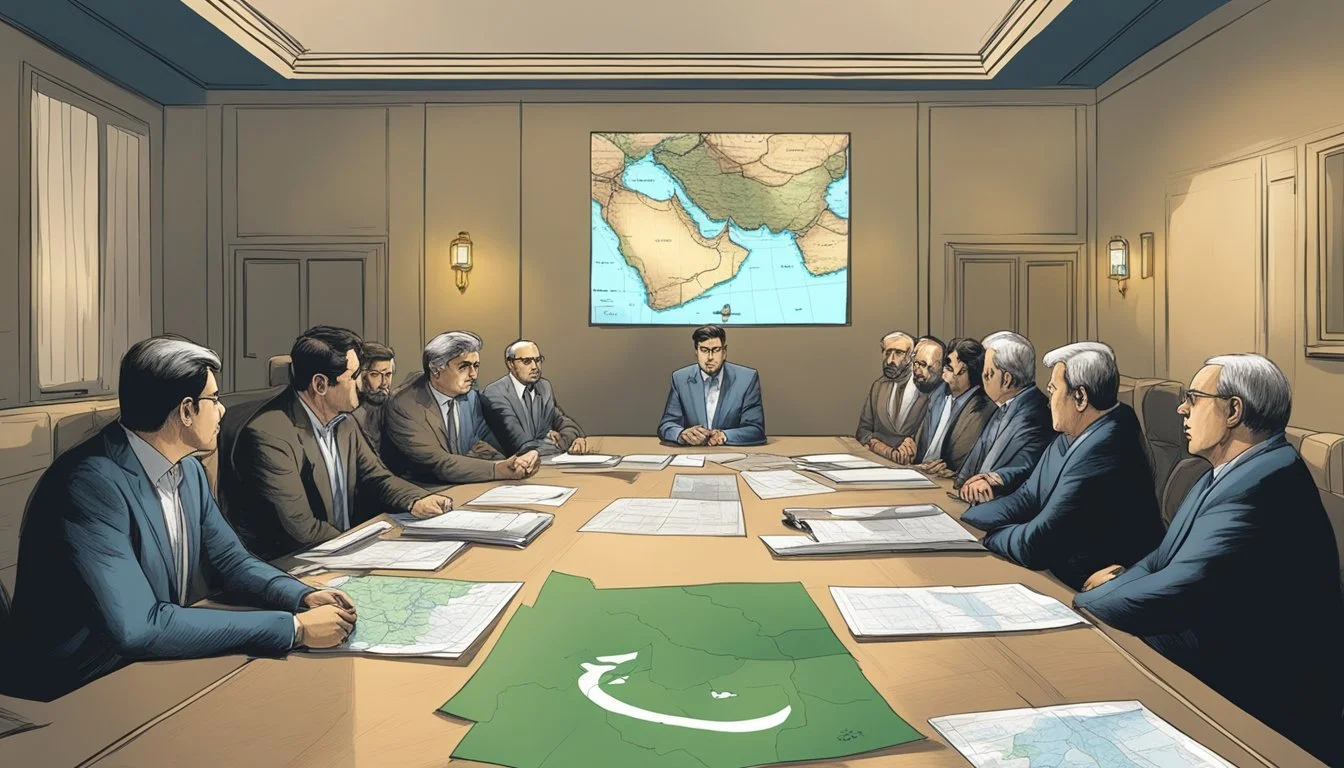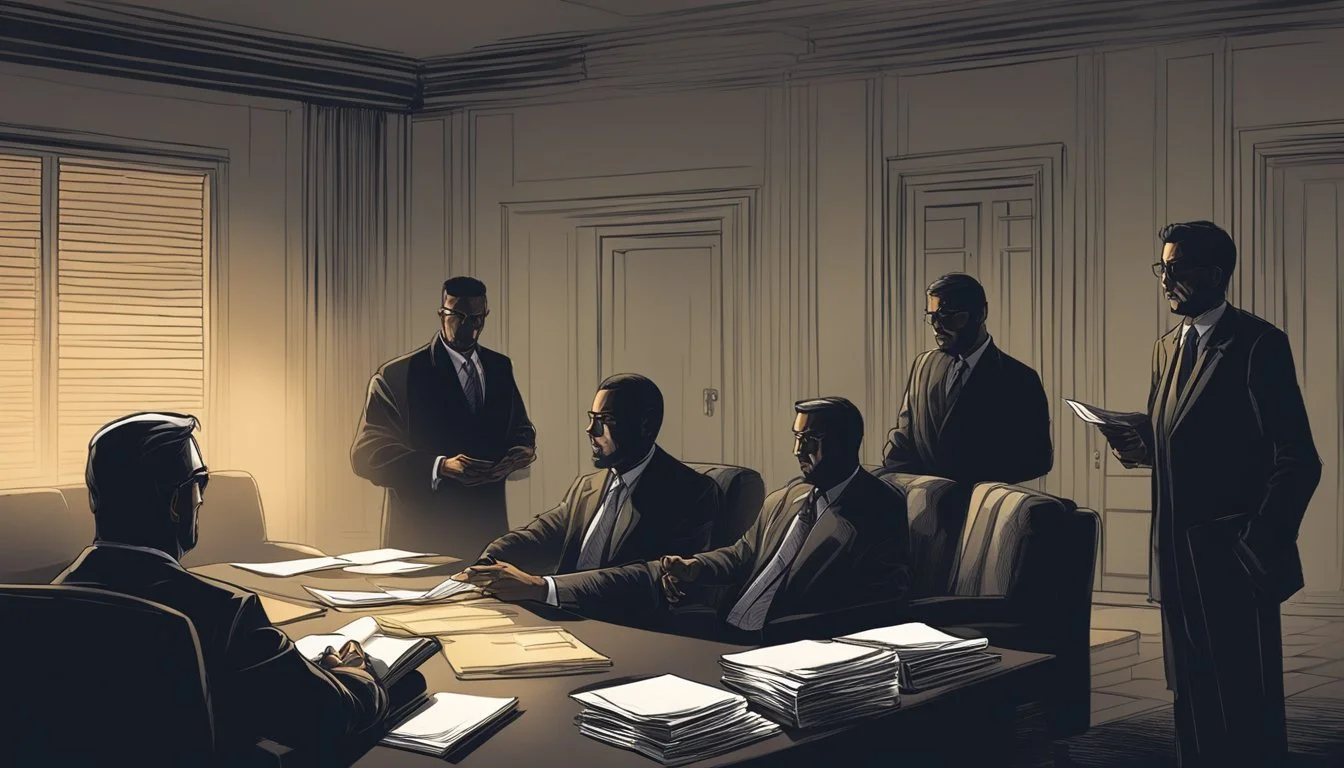The Genuine Argo
CIA's Covert Operation in Iran Declassified After 50 Years
The 1979 Iranian Revolution led to a tense standoff between the United States and Iran, culminating in the seizure of the U.S. Embassy in Tehran. As 52 Americans were held hostage, six diplomats managed to evade capture. Their daring escape, orchestrated by the CIA, became known as the "Canadian Caper" and later inspired the film "Argo."
The CIA's covert operation to extract the six Americans from Iran involved creating an elaborate cover story and fake identities. Tony Mendez, a CIA technical operations officer, devised a plan to disguise the diplomats as a Canadian film crew scouting locations for a science fiction movie. This audacious scheme required meticulous planning, including the creation of a fake production company and promotional materials for the non-existent film.
Recently declassified information has shed new light on the operation. The CIA revealed the identity of Ed Johnson, a second officer involved in the exfiltration. Johnson, a linguist, played a crucial role in the mission's success. This disclosure adds another layer to the already fascinating tale of ingenuity and courage that unfolded during one of the most challenging periods in U.S.-Iran relations.
Background of U.S.-Iran Relations
U.S.-Iran relations deteriorated significantly in the late 1970s due to growing anti-American sentiment in Iran and concerns over U.S. influence in the region. This strained relationship culminated in the 1979 Iran Hostage Crisis, a pivotal event that shaped future interactions between the two nations.
Tensions Leading to the 1979 Iran Hostage Crisis
The roots of tension between the United States and Iran trace back to the 1953 CIA-backed coup that overthrew Iran's democratically elected Prime Minister Mohammad Mosaddegh. This intervention installed Shah Mohammad Reza Pahlavi as the country's leader.
The Shah's rule was marked by rapid modernization and close ties with the West, particularly the U.S. However, his authoritarian regime and perceived cultural Westernization led to growing discontent among Iranians.
By 1977, widespread protests against the Shah's rule began. The U.S. continued to support the Shah, fueling anti-American sentiment. In January 1979, the Shah fled Iran, and Ayatollah Ruhollah Khomeini returned from exile to lead the Islamic Revolution.
Overview of U.S. Foreign Policy in the Middle East
U.S. foreign policy in the Middle East during the Cold War era focused on containing Soviet influence and securing access to oil resources. This strategy led to alliances with authoritarian regimes, including Iran under the Shah.
The U.S. provided military and economic aid to its allies in the region. This support often came at the cost of overlooking human rights abuses and suppression of democratic movements.
In Iran, the U.S. trained the SAVAK, the Shah's secret police force, which was known for its brutal tactics against dissidents. This involvement further strained relations with the Iranian people.
The 1978-1979 Islamic Revolution in Iran marked a significant shift in regional dynamics. It challenged U.S. influence and led to a reassessment of American foreign policy in the Middle East.
Origins of Operation Argo
Operation Argo emerged as a covert CIA mission to rescue six American diplomats trapped in Iran during the 1979 hostage crisis. The operation's genesis involved creative thinking and meticulous planning to devise a plausible cover story and extraction method.
The CIA's Objective
The CIA faced a critical challenge: extracting six U.S. diplomats who had evaded capture and found refuge at the Canadian ambassador's residence in Tehran. With 52 other Americans held hostage at the U.S. Embassy, tensions were high and conventional rescue methods were deemed too risky.
CIA operative Tony Mendez proposed an audacious plan. He suggested creating a fake Canadian film production as cover for the Americans' escape. This strategy aimed to leverage Canada's positive relations with Iran at the time.
The objective was clear: get the diplomats out safely without arousing suspicion or jeopardizing the ongoing negotiations for the other hostages.
Planning the Covert Operation
Mendez and his team worked tirelessly to craft a believable backstory. They established a fake production company, Studio Six Productions, and selected a script titled "Argo" - a science fiction film supposedly set in the Middle East.
The CIA collaborated with Hollywood professionals to create a convincing facade. They placed ads in industry publications, designed movie posters, and even hosted a script read-through event in Los Angeles.
Meticulous attention was paid to creating Canadian identities for the six diplomats. This included crafting detailed personal histories, procuring authentic-looking Canadian passports, and rehearsing cover stories.
The operation's success hinged on its ability to withstand scrutiny from Iranian officials. Every aspect of the plan was refined to ensure plausibility and minimize risks.
Execution of the Operation
The CIA's Argo operation unfolded through meticulous planning and precise execution. Key elements included crafting a believable cover story, assembling a skilled team, and orchestrating the daring escape from Tehran.
Creating the Cover Story
CIA officers devised a clever ruse to extract the six American diplomats. They established a fake movie production company called Studio Six Productions. The fictitious sci-fi film "Argo" provided the perfect cover for a location scouting trip to Iran.
CIA technical operations officers created elaborate fake identities and documents for the diplomats. These included Canadian passports, credit cards, and other supporting materials to withstand scrutiny.
The agency even placed ads in Hollywood trade publications to lend credibility to the fake production. This attention to detail was crucial for maintaining the operation's secrecy.
Assembling the Team
Tony Mendez, a CIA disguise specialist, led the operation. He worked closely with Canadian intelligence and diplomats to coordinate the exfiltration plan.
The CIA enlisted Hollywood makeup artist John Chambers to assist with the movie production facade. Chambers' industry connections helped establish Studio Six's legitimacy.
Ed Johnson, a CIA linguist, joined Mendez on the ground in Tehran. His language skills proved invaluable during the mission.
The Canadian ambassador Ken Taylor and his wife Pat played pivotal roles, sheltering the Americans and coordinating with the CIA.
The Escape from Tehran
On January 27, 1980, Mendez and Johnson arrived in Tehran to meet the six Americans. They spent two days briefing the diplomats on their cover identities and rehearsing their roles.
The group successfully passed through Tehran airport security on January 28. Iranian officials scrutinized their documents but ultimately allowed them to board their Swissair flight.
Tension remained high until the plane cleared Iranian airspace. Only then did the team feel certain of their escape's success.
The Americans flew to Zurich, Switzerland, before continuing to a CIA safe house outside Frankfurt, Germany. There, they were debriefed before returning to the United States.
Challenges and Contingencies
The CIA's Argo operation faced significant political and logistical hurdles that required careful planning and adaptability. The team had to navigate complex international relations and overcome practical obstacles to ensure the mission's success.
Political Hurdles
The tense diplomatic situation between the U.S. and Iran posed major challenges. CIA operatives needed to maintain secrecy and avoid detection by Iranian authorities. Any suspicion could jeopardize the entire mission and endanger the lives of the American diplomats.
The Canadian government's cooperation was crucial. They provided diplomatic cover and passports for the six Americans. This alliance required delicate negotiations and trust between U.S. and Canadian officials.
Timing was critical. The CIA had to act quickly before Iranian authorities discovered the diplomats' true identities. The longer they remained in hiding, the greater the risk of exposure.
Logistical Obstacles
Creating believable cover identities for the diplomats was a complex task. The CIA had to fabricate detailed backstories, professional credentials, and supporting documents that could withstand scrutiny.
Transportation posed significant challenges. The team had to plan a feasible route out of Iran without arousing suspicion. This involved coordinating flights, ground transport, and border crossings.
Communication between operatives and the diplomats was risky. They needed secure methods to relay instructions and updates without alerting Iranian intelligence.
Preparing the diplomats for their roles required intensive training in a short time. They had to learn their cover stories, adopt new mannerisms, and maintain composure under pressure.
International and Domestic Reactions
The CIA's covert operation in Iran sparked diverse reactions globally and impacted U.S. foreign relations. World powers and allies responded with varying degrees of support and criticism, while the incident reshaped America's diplomatic landscape.
Global Response to the CIA Operation
Canada received widespread praise for its role in sheltering and assisting the U.S. diplomats. Prime Minister Joe Clark's government earned international goodwill for its humanitarian efforts. The United Kingdom and New Zealand, which provided additional support, also garnered positive recognition.
Iran condemned the operation as American interference, further straining already tense relations. The Soviet Union used the incident to criticize U.S. foreign policy, portraying it as imperialistic meddling in Middle Eastern affairs.
Many nations remained neutral, carefully balancing diplomatic ties with both the U.S. and Iran. Some privately expressed support for the rescue while publicly maintaining a stance of non-involvement.
Impact on U.S. Foreign Relations
The operation's success bolstered U.S. intelligence prestige but complicated diplomatic efforts to resolve the broader hostage crisis. It strengthened ties with Canada, enhancing cross-border cooperation in intelligence and security matters.
Relations with Iran deteriorated further, complicating negotiations for the remaining hostages' release. The incident reinforced Iran's perception of U.S. covert activities in their country, fueling anti-American sentiment.
The operation influenced U.S. approach to hostage situations and covert rescues. It led to increased emphasis on interagency cooperation and diplomatic solutions in crisis management.
Middle Eastern countries grew warier of U.S. intelligence activities, impacting intelligence gathering and diplomatic initiatives in the region for years to come.
Aftermath and Legacy
The Argo operation had far-reaching consequences for intelligence practices and U.S.-Iran relations. It highlighted the importance of creative problem-solving in high-stakes situations and reshaped approaches to covert exfiltration missions.
Long-Term Effects on Intelligence Operations
The success of Argo influenced future CIA operations. It demonstrated the value of interagency cooperation, with the CIA and Canadian government working closely together. This collaboration became a model for future international intelligence partnerships.
The mission also underscored the effectiveness of using cover stories in hostile environments. Intelligence agencies expanded their use of elaborate disguises and false identities in subsequent operations.
Argo's success led to increased funding for the CIA's technical operations division. This boost allowed for the development of more sophisticated exfiltration techniques and tools.
The operation's reliance on Hollywood connections inspired new approaches to creating believable cover stories. Intelligence agencies began cultivating relationships with various industries to enhance the authenticity of their operations.
The Hostage Crisis in Historical Context
The Iran hostage crisis, which lasted 444 days, strained U.S.-Iran relations for decades. It marked a turning point in Middle East diplomacy and shaped American foreign policy in the region.
The crisis led to economic sanctions against Iran, which continued to impact the country's economy long after the hostages' release. It also contributed to increased tensions between the U.S. and other Middle Eastern countries.
The successful Argo operation provided a rare positive outcome during a challenging period for U.S. foreign policy. It boosted morale within the intelligence community and the State Department.
The crisis and Argo operation influenced public perception of the CIA. While the agency faced criticism for other actions, the Argo mission was widely seen as a triumph of American ingenuity and bravery.
Cultural Representations
The CIA's covert operation in Iran has captured public imagination and been portrayed across various media. These depictions have shaped perceptions and sparked discussions about historical accuracy versus artistic license.
Media Portrayals and Public Perception
News coverage of the "Canadian Caper" initially focused on Canadian efforts, downplaying CIA involvement. This narrative persisted for years, influencing public understanding. Books and articles gradually revealed more details about the CIA's role, sparking renewed interest.
The operation's portrayal evolved from a diplomatic triumph to a tale of espionage and ingenuity. This shift reflected changing attitudes towards intelligence agencies and international relations.
Public fascination with the story grew as more information became declassified. Online discussions and documentaries further explored the complexities of the mission, often comparing fact and fiction.
Film Adaptations and Dramatizations
The 2012 film "Argo" brought widespread attention to the CIA operation. Directed by Ben Affleck, it won multiple awards, including the Academy Award for Best Picture. The movie dramatized events, adding tension and Hollywood flair.
"Argo" took creative liberties with historical facts. It downplayed Canadian involvement and exaggerated certain aspects for dramatic effect. These changes sparked debates about historical accuracy in film.
Other adaptations include a 1981 TV movie "Escape from Iran: The Canadian Caper" and various documentary features. Each version offered different perspectives on the events, contributing to the operation's cultural legacy.
Analysis and Conclusions
Operation Argo demonstrated the CIA's ingenuity in crisis situations and highlighted the importance of interagency cooperation. The mission's success relied on meticulous planning, creative problem-solving, and seamless execution.
Evaluating the Success of Operation Argo
Operation Argo achieved its primary objective of extracting six U.S. diplomats from revolutionary Iran. The mission's success can be attributed to several key factors:
Innovative cover story
Attention to detail in creating false identities
Effective collaboration with Canadian officials
The operation's covert nature allowed it to fly under the radar of Iranian authorities. By posing as a film crew, the CIA team cleverly exploited the Iranian government's desire for international recognition.
The mission's success also hinged on the diplomats' ability to maintain their cover identities under pressure. This highlighted the importance of thorough preparation and training in high-stakes operations.
Lessons Learned for Modern Espionage
Operation Argo provided valuable insights for future intelligence operations:
Adaptability is crucial in rapidly changing environments
Cultural understanding can be a powerful tool in covert operations
International cooperation enhances mission effectiveness
The operation demonstrated the importance of thinking outside the box when traditional methods are not viable. It showed that unconventional approaches, when executed skillfully, can yield remarkable results.
The mission's success also underscored the value of building and maintaining strong relationships with allied nations. The Canadian government's cooperation was instrumental in providing safe haven and logistical support.




